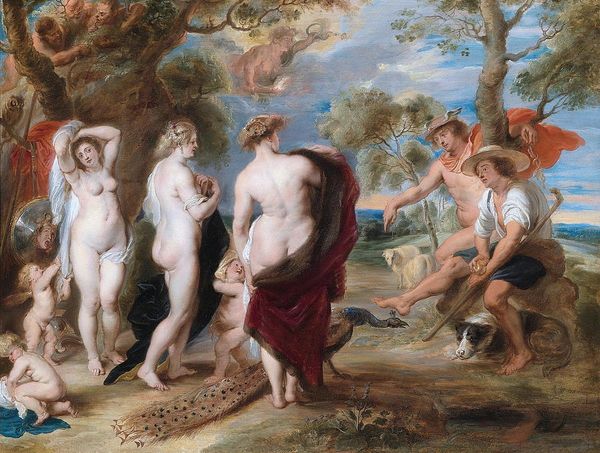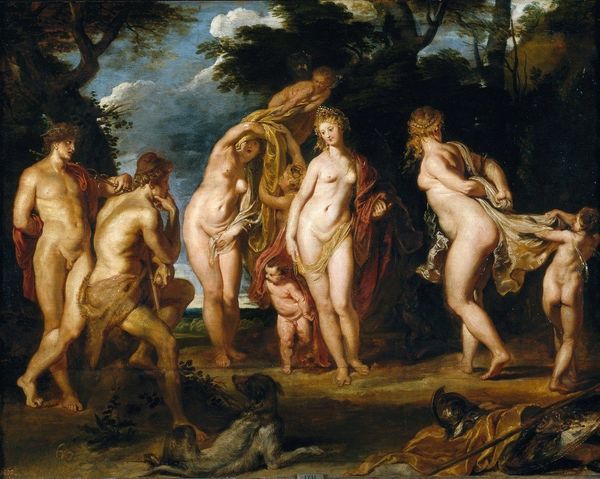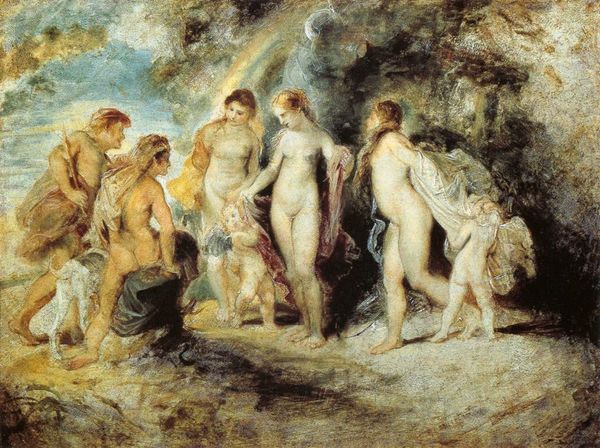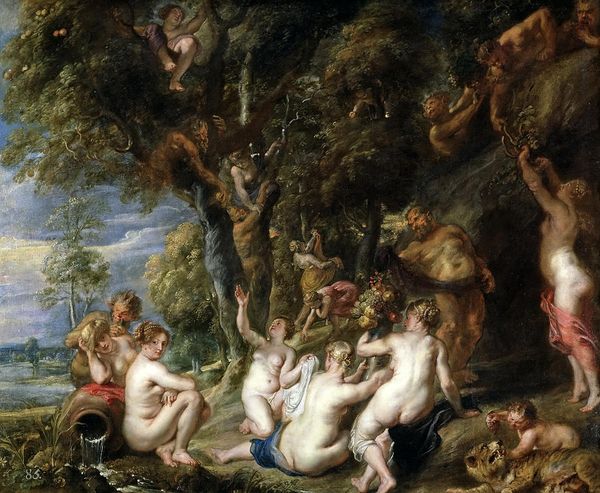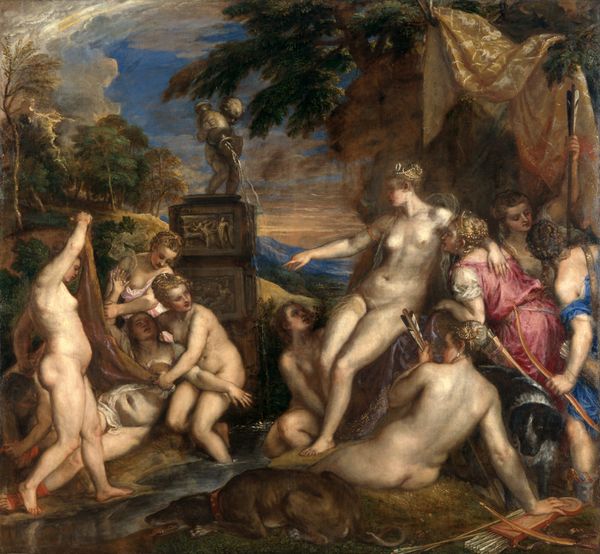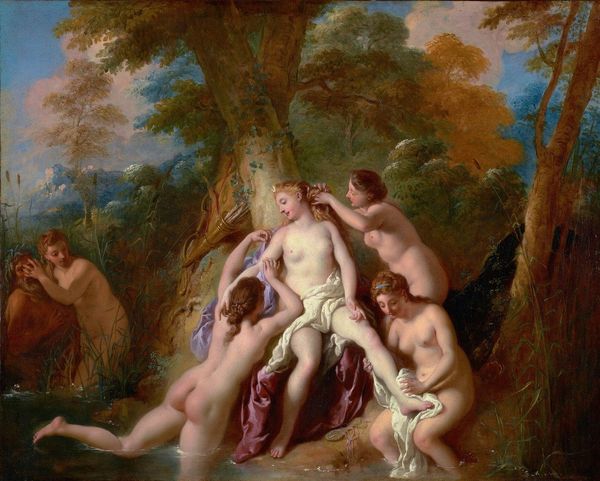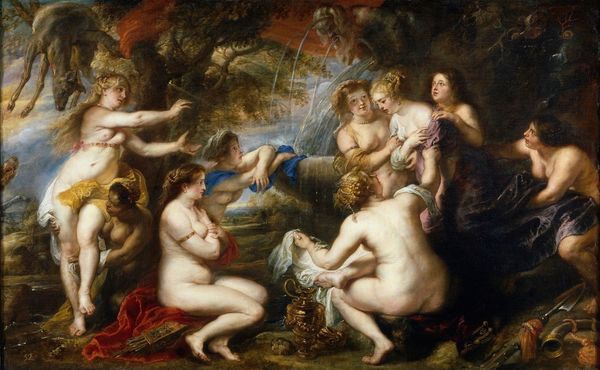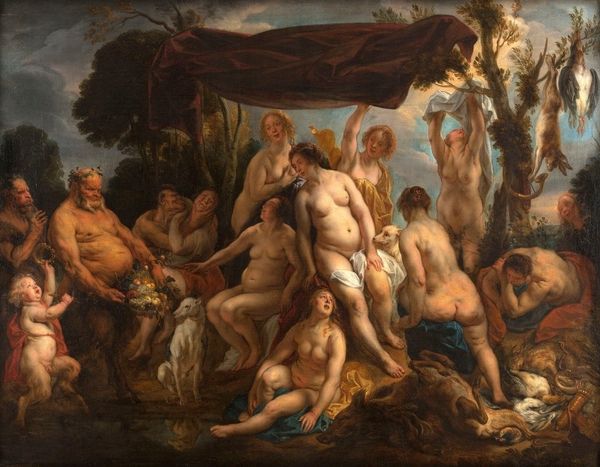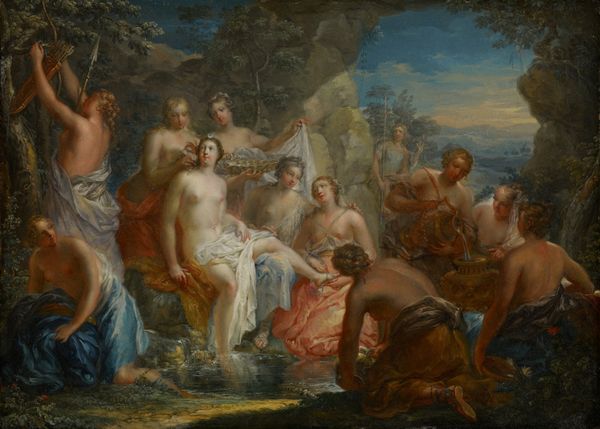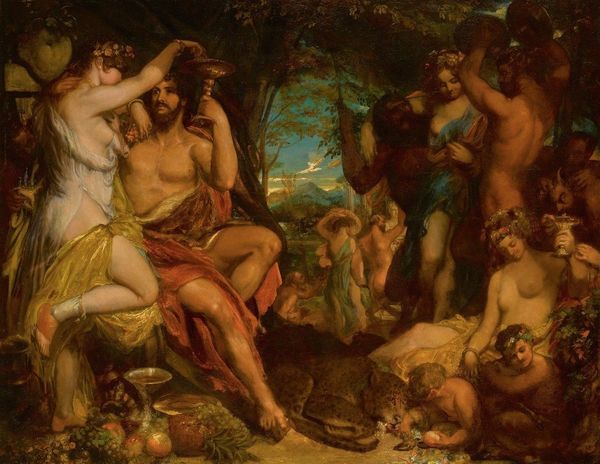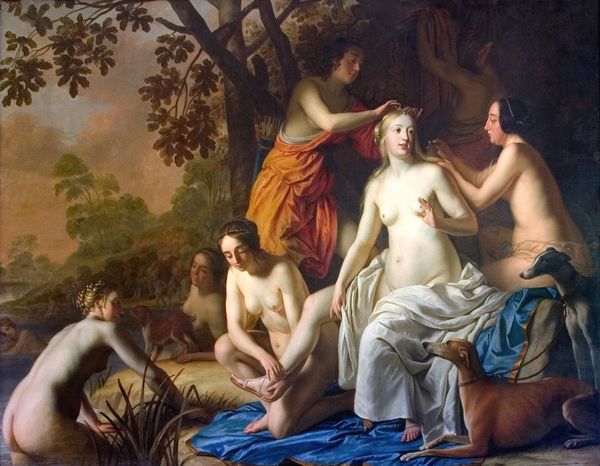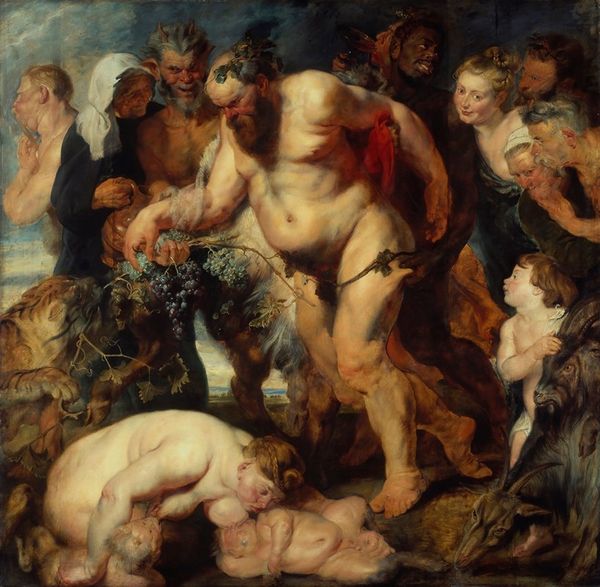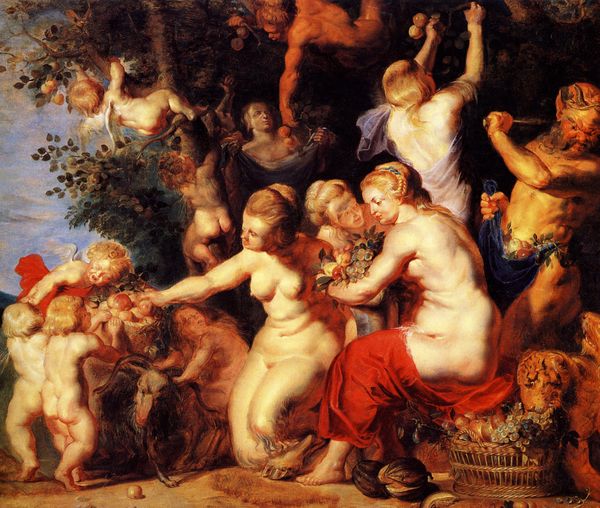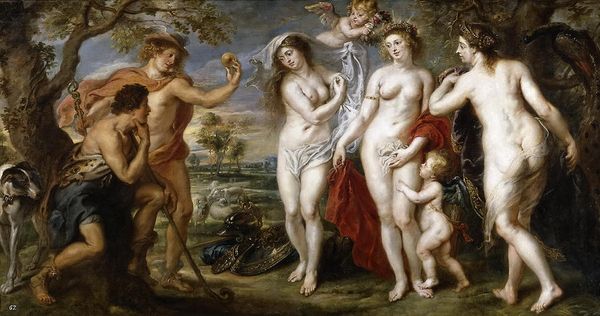
#
impressionistic
#
abstract painting
#
possibly oil pastel
#
oil painting
#
neo expressionist
#
acrylic on canvas
#
underpainting
#
mythology
#
human
#
animal drawing portrait
#
surrealist
#
expressionist
Dimensions: 145 x 194 cm
Copyright: Public domain
Editor: Here we have Peter Paul Rubens's *The Judgment of Paris* from 1636. It’s oil on canvas, and the composition is just arresting! So many figures arranged within the landscape. How do you interpret this work, focusing on its formal qualities? Curator: One might begin by observing the arrangement of figures relative to each other and the picture plane, an arrangement determined by its structural integrity. Note, too, Rubens’s masterful use of contrapposto—the weight shift evident in the goddesses’ poses. Consider, also, the painting’s overall tonality. Do you perceive a dominant color or value range? Editor: The figures are fair and radiant, with an interplay of light and shadow across their forms. And the colors! There’s an intentional visual cadence with the reddish-brown drapery draped from figure to figure. How does this influence the reading of the artwork? Curator: Indeed, that interplay of light and shadow—chiaroscuro, to use the term—contributes significantly to the drama and spatial depth of the scene. But can you determine how this arrangement creates a focal point in the composition? How does this enhance its narrative clarity? Editor: Paris and Hermes draw my gaze immediately as figures closest to the center of the scene, whereas the goddesses draw our eye to the edges. Is this a method for drawing in the viewer and providing clues to the scene’s storyline? Curator: Precisely. The artist has composed this work to enhance our visual journey through the piece, which begins with the act of judgement on full display. It showcases Rubens's ability to lead the viewer through an ordered artifice. Now, consider the brushwork. What textures do you observe? Editor: I appreciate how breaking down Rubens's composition using a formalist lens highlights the mastery on display. Thanks! Curator: Agreed; scrutinizing the pictorial structure enriches appreciation. The act of visual dissection provides a vocabulary to decode masterpieces, to gain insights unattainable through sheer aesthetic experience.
Comments
No comments
Be the first to comment and join the conversation on the ultimate creative platform.
